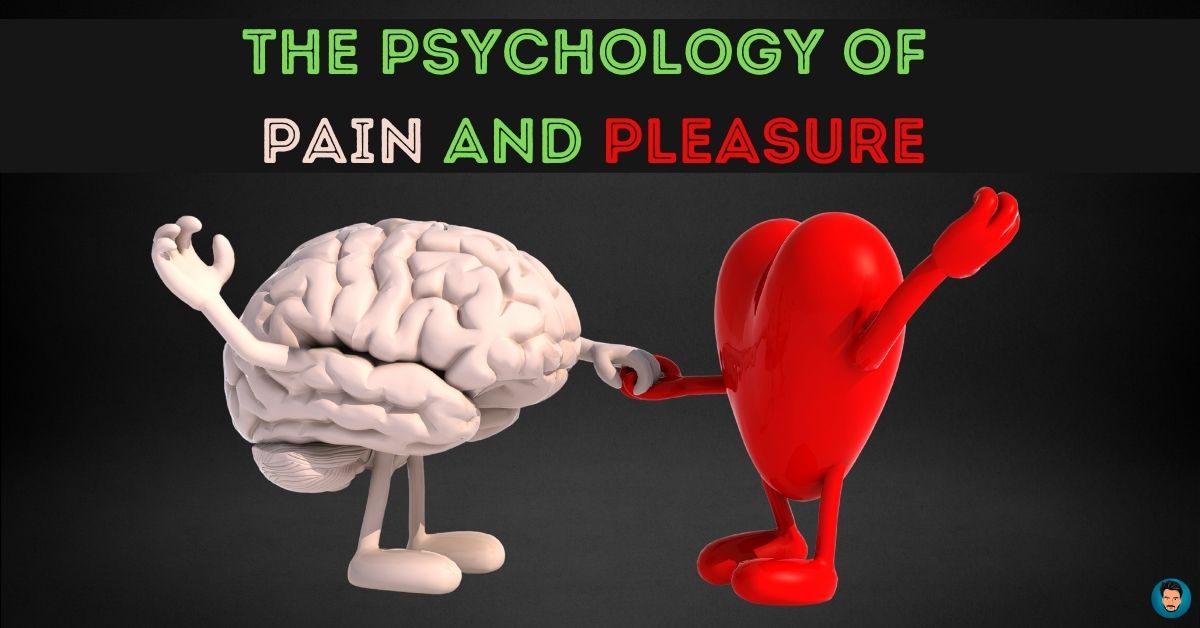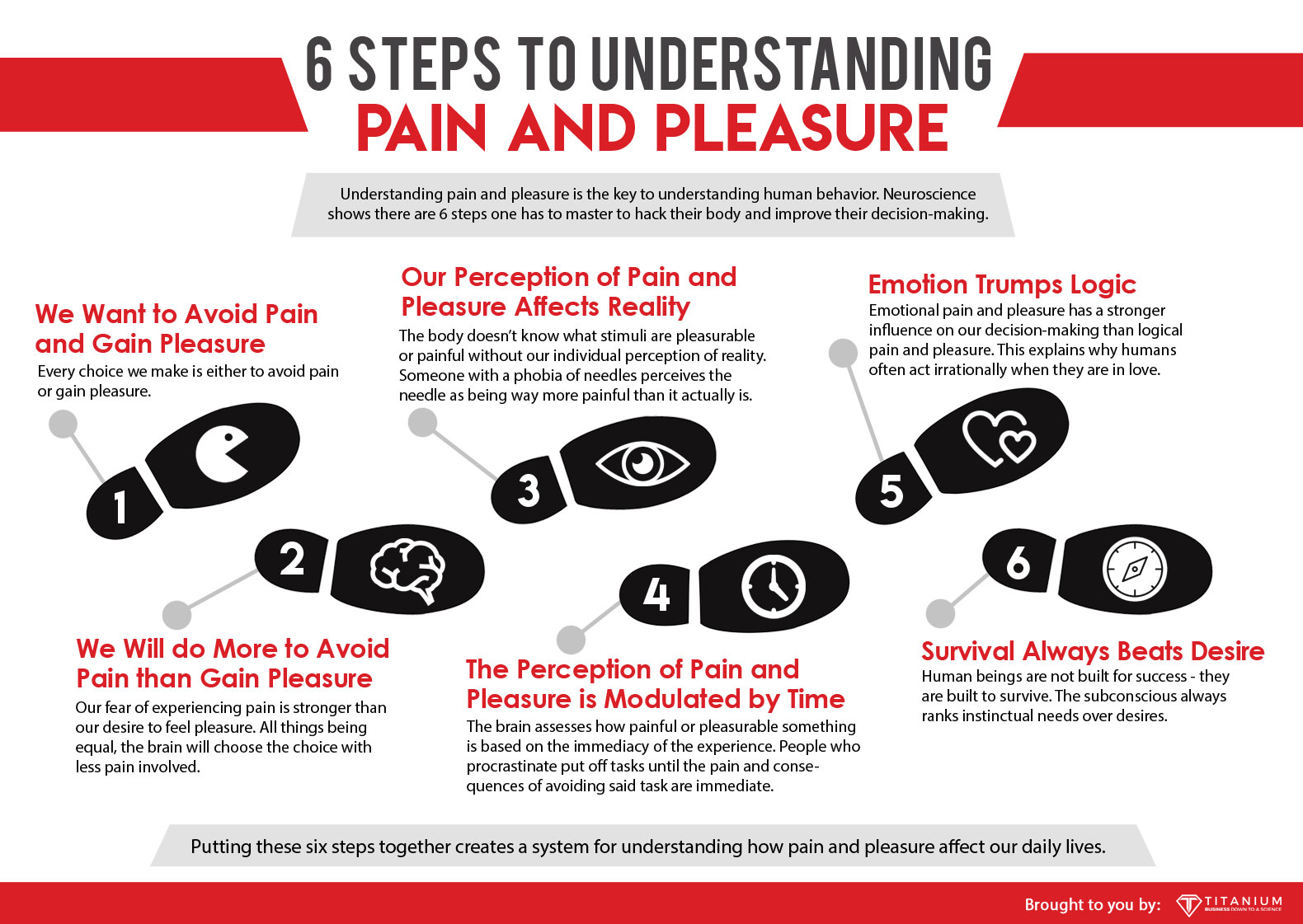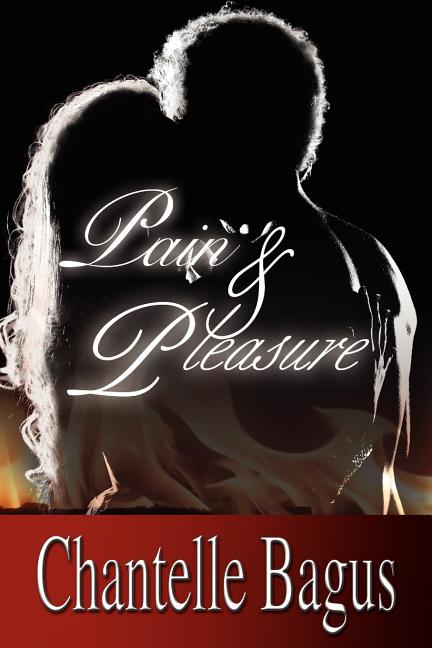Pain and Pleasure Don't Mix: Unveiling the Paradox of Opposites
In the realm of human experience, "pain and pleasure don't mix" is a proverb that captures the paradoxical relationship between two fundamental sensations. Pain, an unpleasant and distressing feeling, and pleasure, a gratifying and enjoyable feeling, often exist as opposing forces. For instance, a runner may experience the pain of muscle fatigue during a marathon, yet derive pleasure from the sense of accomplishment upon crossing the finish line.
The concept of pain and pleasure dichotomy holds significant relevance in various fields. In psychology, it relates to theories of motivation and decision-making. In medicine, it influences treatment approaches and pain management strategies. Historically, the concept has been explored by philosophers, religious leaders, and artists, shaping cultural perspectives on suffering and happiness. This article delves into the intricate interplay of pain and pleasure, examining their contrasting nature, their interdependence, and their profound impact on human existence.
Through an in-depth analysis of real-world scenarios, scientific studies, and historical accounts, we will uncover the paradoxical beauty of pain and pleasure, revealing their paradoxical dance that shapes our lives.
Pain and Pleasure Don't Mix
The interplay of pain and pleasure forms a complex and dynamic aspect of human experience. Understanding their fundamental elements is crucial for comprehending their paradoxical relationship.
- Definition: Opposing sensations; pain is distressing, pleasure is gratifying.
- Function: Signals for survival, rewards for desired outcomes.
- Benefits: Motivation, learning, emotional regulation.
- Challenges: Addiction, chronic pain, mental health disorders.
- Historical Context: Philosophical debates, religious beliefs, cultural perspectives.
These key points provide a foundation for further exploration of pain and pleasure's intricate relationship. Examples illustrate their multifaceted nature: a burn victim's agony contrasted with a cancer patient's relief from successful treatment. Connections between pain and pleasure reveal their paradoxical interdependence: childbirth's excruciating pain juxtaposed with the overwhelming joy of new life. Relevance to the main article highlights the significance of these essential aspects in shaping the overall understanding of pain and pleasure's paradoxical dance.
Definition
At the core of "pain and pleasure don't mix" lies the fundamental distinction between these two opposing sensations. Pain, an unpleasant and distressing feeling, serves as a warning signal, alerting us to potential harm or injury. Conversely, pleasure, a gratifying and enjoyable feeling, reinforces desired behaviors and promotes survival. Understanding their contrasting nature is essential for unraveling the paradoxical relationship between pain and pleasure.
- Nociception vs. Hedonics: Nociception, the detection of potentially harmful stimuli, triggers pain, while hedonics, the pursuit of pleasurable sensations, drives the experience of pleasure.
- Physiological Responses: Pain manifests in activation of the sympathetic nervous system, causing increased heart rate, blood pressure, and muscle tension. Pleasure, on the other hand, activates the parasympathetic nervous system, leading to relaxation, decreased heart rate, and a sense of well-being.
- Emotional and Psychological Impact: Pain often evokes negative emotions such as fear, anxiety, and sadness, while pleasure elicits positive emotions such as joy, contentment, and excitement. Psychologically, pain can be debilitating and interfere with daily life, whereas pleasure enhances mood, motivation, and overall well-being.
- Adaptive Functions: Pain serves as a protective mechanism, signaling tissue damage or potential threats, promoting avoidance of harmful stimuli and facilitating healing. Pleasure, on the other hand, reinforces behaviors that contribute to survival and reproduction, such as eating, drinking, and social interaction.
These facets of pain and pleasure highlight their contrasting yet interconnected nature. Pain, with its unpleasantness and protective function, stands in stark contrast to the gratifying and rewarding nature of pleasure. Together, they form a delicate balance, influencing our behavior, emotions, and overall well-being.
Function
The intricate relationship between "pain and pleasure don't mix" is deeply intertwined with their fundamental functions: pain as a signal for survival and pleasure as a reward for desired outcomes.
Cause and Effect: A Delicate Balancing Act
Pain, as a protective mechanism, prompts us to avoid harmful stimuli and promotes healing. This cause-and-effect relationship is evident in how pain motivates us to withdraw from a hot stove to prevent burns or to rest an injured limb to facilitate recovery. Conversely, pleasure, as a positive reinforcer, encourages us to engage in behaviors that contribute to our survival and well-being. The pleasure derived from a delicious meal motivates us to eat, providing essential nutrients for our bodies. Similarly, the pleasurable sensations associated with social interaction promote bonding and strengthen relationships, contributing to our overall well-being.
Essential Components: Interdependence and Contrast
The function of pain and pleasure as signals and rewards is an essential element of their paradoxical relationship. Pain's protective function stands in stark contrast to pleasure's rewarding nature, highlighting their opposing yet interdependent roles in our lives. This contrast is a key component in understanding why "pain and pleasure don't mix": the inherent incompatibility of their functions.
Examples: Vivid Illustrations of Cause and Effect
Real-life instances abound, showcasing the interplay between pain and pleasure's functions. A runner pushing through the pain of muscle fatigue during a marathon exemplifies pain's protective function, driving them to avoid injury and preserve their physical well-being. In contrast, the pleasure derived from completing the race serves as a reward for their effort and perseverance. Similarly, the pain of childbirth is often juxtaposed with the overwhelming joy of welcoming a new life, highlighting the contrasting yet interconnected nature of pain and pleasure.
Practical Implications: Applying Insights for Positive Outcomes
Understanding the function of pain and pleasure as signals and rewards has practical implications in various fields. In medicine, pain management strategies aim to alleviate suffering while promoting healing, recognizing pain's protective role. Conversely, pleasure-based interventions, such as art therapy or music therapy, are used to enhance well-being and promote positive emotions. In psychology, understanding the rewarding nature of pleasure informs behavioral modification techniques, helping individuals develop healthier habits and overcome addictions.
In conclusion, the function of pain and pleasure as signals for survival and rewards for desired outcomes is an integral aspect of their paradoxical relationship. Their contrasting yet interdependent roles highlight the complexity of human experience and the delicate balance between protection and gratification. Understanding this intricate interplay is crucial for developing effective strategies to manage pain, promote well-being, and optimize human flourishing.
Benefits
Within the paradoxical relationship of "pain and pleasure don't mix," benefits emerge from their interplay, positively shaping human experience. These benefits encompass motivation, learning, and emotional regulation, highlighting the paradoxical nature of pain and pleasure as they contribute to overall well-being.
- Motivational Drive: Pain and pleasure serve as powerful motivators. Pain prompts us to avoid harmful situations, while pleasure encourages us to pursue desirable outcomes. This motivational force drives us to protect ourselves, seek growth, and achieve our goals.
- Enhanced Learning: Pain and pleasure play crucial roles in learning and memory formation. Painful experiences teach us to avoid potentially harmful situations, while pleasurable experiences reinforce desired behaviors. This interplay enhances learning and adaptation to our environment.
- Emotional Balance: Pain and pleasure have a profound impact on our emotions. Painful experiences can lead to negative emotions such as fear, anxiety, and sadness, while pleasurable experiences elicit positive emotions like joy, contentment, and excitement. Managing the balance between these opposing emotional states is essential for overall well-being.
- Stress and Coping: Pain and pleasure influence our response to stress and coping mechanisms. Chronic pain can lead to stress and mental health disorders, while pleasurable activities can serve as coping mechanisms to manage stress and promote resilience.
These benefits underscore the paradoxical nature of pain and pleasure. While pain is often perceived as negative and pleasure as positive, both contribute to our survival, growth, and overall well-being. Understanding the intricate relationship between pain and pleasure allows us to harness their benefits and mitigate their potential negative consequences.
Challenges
The paradoxical relationship between "pain and pleasure don't mix" takes on new dimensions when examining the challenges posed by addiction, chronic pain, and mental health disorders. These conditions disrupt the delicate balance between pain and pleasure, leading to complex interactions and profound impacts on individuals' lives.
Cause and Effect: A Tangled Web of Influences
In the realm of addiction, excessive pursuit of pleasure-inducing substances or activities can lead to a downward spiral of pain and suffering. Substance abuse, for example, often results in physical pain, mental anguish, and strained relationships. Conversely, chronic pain can drive individuals to seek relief through potentially addictive substances, creating a vicious cycle of pain and addiction.
Mental health disorders, too, exhibit a complex interplay with pain and pleasure. Depression, for instance, can manifest as both physical pain and anhedonia, the inability to experience pleasure. Conversely, pleasurable experiences can sometimes alleviate depressive symptoms, highlighting the paradoxical nature of these conditions.
Essential Components: Intertwined and Inseparable
Addiction, chronic pain, and mental health disorders are not merely external factors influencing "pain and pleasure don't mix"; they are integral components of the experience itself. These conditions disrupt the normal functioning of pain and pleasure pathways in the brain, leading to heightened sensitivity to pain, diminished capacity for pleasure, or both.
In addiction, the brain's reward system is hijacked by addictive substances or behaviors, leading to an imbalance between pleasure-seeking and pain avoidance. Chronic pain conditions can cause neuroplastic changes in the brain, resulting in increased pain perception and a decreased ability to experience pleasure. Mental health disorders, such as depression and anxiety, can disrupt the brain's natural pain-regulating mechanisms, making individuals more susceptible to experiencing pain and less responsive to pleasurable stimuli.
Examples: Vivid Illustrations of Complex Interactions
Real-life instances abound, showcasing the intricate interplay between "pain and pleasure don't mix" and the challenges posed by addiction, chronic pain, and mental health disorders.
- A person struggling with addiction may experience intense cravings for their substance of choice, leading them to engage in risky behaviors to obtain it. This pursuit of pleasure often results in physical pain, emotional distress, and strained relationships.
- An individual living with chronic pain may find that once-enjoyable activities now exacerbate their pain, leading to social isolation and a diminished quality of life. The constant presence of pain can overshadow and diminish the ability to experience pleasure.
- A person with depression may struggle to find joy in activities they once loved, leading to a loss of interest and motivation. The inability to experience pleasure, known as anhedonia, is a hallmark symptom of depression.
Applications: Practical Implications of Understanding the Interplay
Understanding the complex relationship between "pain and pleasure don't mix" and the challenges of addiction, chronic pain, and mental health disorders has significant practical implications.
- Addiction Treatment: Recognizing the role of pain and pleasure in addiction can inform treatment approaches that address both the physical and psychological aspects of the condition.
- Chronic Pain Management: Understanding the interplay between pain and pleasure can help healthcare providers develop more effective pain management strategies that consider the patient's overall well-being and quality of life.
- Mental Health Interventions: Incorporating an understanding of pain and pleasure into mental health interventions can help therapists address anhedonia and other symptoms that interfere with an individual's ability to experience pleasure.
In conclusion, the challenges posed by addiction, chronic pain, and mental health disorders shed light on the intricate relationship between "pain and pleasure don't mix." These conditions disrupt the delicate balance between pain and pleasure, leading to complex interactions and significant impacts on individuals' lives. Understanding this interplay is crucial for developing effective interventions and improving the quality of life for those affected by these challenges.
Historical Context
The historical context of "pain and pleasure don't mix" is a tapestry woven with philosophical debates, religious beliefs, and cultural perspectives that have profoundly shaped societal attitudes towards pain and pleasure, as well as their intricate relationship.
Cause and Effect: A Reciprocal Dance
Cause and effect intertwine in the historical context, where philosophical and religious beliefs have influenced cultural perspectives on pain and pleasure, and vice versa. For instance, the Christian doctrine of original sin posits that pain and suffering are a consequence of human disobedience, shaping cultural attitudes towards pain as punishment or a means of redemption. Conversely, cultural norms and practices can influence religious beliefs and philosophical perspectives; societal taboos surrounding certain pleasures have influenced religious teachings on morality and self-denial.
Essential Components: Intertwined Threads in the Human Tapestry
Historical context is an essential element of "pain and pleasure don't mix," providing a framework for understanding societal attitudes and behaviors surrounding pain and pleasure. Philosophical debates on the nature of pain and its relationship to suffering have shaped cultural perspectives on pain management and the pursuit of pleasure. Religious beliefs have influenced cultural norms surrounding pleasure and guilt, shaping societal attitudes towards hedonism and asceticism. These historical threads are woven into the fabric of human experience, influencing individual and collective responses to pain and pleasure.
Examples: Vivid Illustrations of Historical Influences
Real-life instances abound, showcasing the historical context's impact on "pain and pleasure don't mix." The ancient Greek concept of "apatheia," or freedom from suffering, influenced Stoic philosophy's emphasis on emotional resilience and the rejection of excessive pleasure. In contrast, the pursuit of pleasure was central to the Epicurean philosophy, advocating for a life of moderation and the cultivation of simple pleasures. These historical perspectives continue to resonate in modern attitudes towards pain and pleasure.
Applications: Practical Insights for Today's World
Understanding the historical context of "pain and pleasure don't mix" has practical significance in various fields. In medicine, an understanding of cultural beliefs and attitudes towards pain can inform pain management strategies and improve patient care. In psychology, historical perspectives on pleasure can shed light on addictive behaviors and inform interventions for promoting well-being. By delving into the historical context, we gain valuable insights into the complexities of pain and pleasure, enabling us to address these fundamental aspects of human experience more effectively.
In conclusion, the historical context provides a profound lens through which to examine "pain and pleasure don't mix." Philosophical debates, religious beliefs, and cultural perspectives have shaped societal attitudes towards pain and pleasure, influencing individual and collective experiences. Understanding this historical context enables us to appreciate the nuances of pain and pleasure, address them more effectively, and foster a more comprehensive understanding of the human condition.
Frequently Asked Questions
This section aims to address common questions and clarify aspects of "pain and pleasure don't mix." These questions anticipate reader queries and delve into the complexities of this paradoxical relationship.
Question 1:What exactly is meant by "pain and pleasure don't mix"?
Answer: This proverb captures the contrasting nature of pain and pleasure, two fundamental sensations that often exist as opposing forces. Pain, an unpleasant and distressing feeling, and pleasure, a gratifying and enjoyable feeling, rarely coexist simultaneously.
Question 2:How do pain and pleasure manifest in real-life scenarios?
Answer: Consider a marathon runner experiencing muscle fatigue yet deriving pleasure from the sense of accomplishment upon crossing the finish line. This example illustrates the paradoxical coexistence of pain and pleasure within a single experience.
Question 3:Why is understanding the relationship between pain and pleasure important?
Answer: Comprehending this relationship is crucial in various fields, including psychology, medicine, and philosophy. It aids in developing effective strategies for pain management, understanding decision-making processes, and exploring the nature of human experience.
Question 4:How can pain and pleasure influence decision-making?
Answer: Pain and pleasure serve as motivators, guiding our actions towards avoiding harmful situations and seeking desirable outcomes. Understanding their influence on decision-making can help us make informed choices that promote well-being.
Question 5:What are some common challenges associated with the interplay of pain and pleasure?
Answer: Addiction, chronic pain, and mental health disorders can disrupt the balance between pain and pleasure, leading to complex interactions and negative consequences. Understanding these challenges is essential for developing effective interventions.
Question 6:How has the historical context shaped societal attitudes towards pain and pleasure?
Answer: Philosophical debates, religious beliefs, and cultural perspectives have influenced how societies perceive and respond to pain and pleasure. Examining the historical context provides valuable insights into the evolution of these attitudes.
In summary, the FAQs have shed light on the intricate relationship between pain and pleasure, their paradoxical coexistence, and their significance in various aspects of human experience. As we delve deeper into this topic, we will explore specific strategies for managing pain, maximizing pleasure, and navigating the challenges that arise from their interaction.
Transition: Join us as we embark on a journey to unravel the complexities of pain and pleasure management, examining evidence-based techniques, exploring cultural influences, and delving into the latest research on this fascinating topic.
TIPS
This section provides practical tips to help you effectively manage pain and maximize pleasure in your life.
Tip 1: Embrace the Dichotomy: Recognize that pain and pleasure are two distinct and often opposing experiences. Accepting this fundamental difference can help you approach them with greater awareness and resilience.Tip 2: Identify Pain's Purpose: Understand that pain serves as a protective signal, alerting you to potential harm or injury. Instead of suppressing pain, listen to its message and take appropriate action to address the underlying cause.
Tip 3: Cultivate Pleasure Moments: Make a conscious effort to seek out and savor pleasurable experiences, both big and small. Engage in activities that bring you joy, relaxation, and fulfillment.
Tip 4: Balance Seeking and Avoiding: While it's important to pursue pleasure, avoid becoming solely focused on it. Strive for a balanced approach that acknowledges the value of both seeking pleasurable experiences and avoiding painful ones.
Tip 5: Practice Mindfulness: Develop your ability to be present in the moment, fully experiencing both pleasant and unpleasant sensations without judgment. Mindfulness can help you navigate the ups and downs of life with greater equanimity.
Tip 6: Seek Professional Help: If you're struggling with persistent pain or difficulty experiencing pleasure, consider seeking guidance from healthcare professionals, therapists, or pain management specialists. They can provide tailored advice and support.
Tip 7: Embrace Growth and Learning: Recognize that both pain and pleasure can be opportunities for growth and learning. Pain can teach us about our limits and resilience, while pleasure can inspire us to explore new possibilities. Embrace these experiences as valuable lessons on the journey of life.
Tip 8: Foster Gratitude: Cultivate an attitude of gratitude for the positive aspects of your life, even amidst challenging circumstances. Gratitude can help shift your focus towards the blessings you have, promoting a greater sense of well-being.
By implementing these tips, you can develop a more balanced and mindful approach to pain and pleasure, ultimately enhancing your overall well-being and resilience.
Transition: As we conclude our exploration of pain and pleasure, let's delve into the profound impact these fundamental experiences have on our lives and how they shape our perceptions, decisions, and relationships.
Conclusion
Our exploration of "pain and pleasure don't mix" has illuminated the intricate interplay between these two fundamental experiences, revealing their paradoxical nature and profound impact on our lives.
- Key Idea: Pain serves as a protective signal, alerting us to potential harm, while pleasure reinforces desired behaviors and promotes survival.
- Key Idea: Pain and pleasure are often opposing forces, with their contrasting functions shaping our experiences and motivations.
- Interconnection: The delicate balance between pain and pleasure is essential for our well-being, motivating us to avoid harm, pursue desirable outcomes, and regulate our emotions.
As we navigate the complexities of pain and pleasure, we gain a deeper appreciation for their significance in shaping our perceptions, decisions, and relationships. This understanding empowers us to approach these experiences with greater awareness, resilience, and a commitment to fostering balance and well-being in our lives.
In a world often polarized between extremes, the paradox of pain and pleasure reminds us that life is a tapestry woven with both joy and suffering. Embracing the full spectrum of human experience, with its inherent contradictions and paradoxes, is the key to living a rich and meaningful life.
Unlock The World Of Chanel With Chanel Camryn: Insider Tips And Reviews
Natalie Mars Behind The Scenes: Unveiling The Creative Visionary's Process
Unleashing The Legend: A Journey Through Juan El Caballo Loco Movies And TV Shows

Underground Child Modeling Photos » Otaewns

Pain And Pleasure (Nuefliks) Web Series Cast & Crew, Roles, Release

The psychology of pain and pleasure Akash Jagdhale

The Pleasure and Pain Principle Titanium Success

Pain and Pleasure
ncG1vNJzZmiwlaO5uXrApqpsZpSetKrAwKWmnJ2Ro8CxrcKeqmebn6J8sa3Ip2SappRiva2xwKysq51dmbyvwMRmq6Ghk6B7qcDMpQ%3D%3D